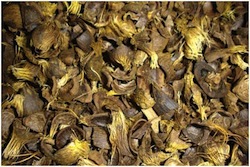NextFuels has unveiled its strategy for economically producing transportation and industrial fuels from wet, unprocessed agricultural waste. The underlying technology, which was developed by Shell Oil over several years, will allow NextFuels and its partners to produce bio-based petroleum at commercial scale for $75 to $85 a barrel out of wet biomass that has not been mechanically or thermally dried. The company will also provide palm plantation owners and others a way to transform the tons of residual plant matter generated by agricultural operations into a new, profitable second crop.
 The company is collaborating on its commercial strategy with Enagra on the development of its technology.
The company is collaborating on its commercial strategy with Enagra on the development of its technology.
“Dr. Frans Goudriaan and Dr. Jaap Naber have been working on this technology for almost 30 years. With Dr. Ralph Overend’s extensive background in the biomass and biofuels space, we are extremely excited to be moving this unique technology forward,” said Michael Petras, CEO of NextFuels. “While we have a lot of work ahead of us, we look forward to helping solve the biomass issue in Malaysia.”
According to NextFuels, edible palm oil has surpassed soybean to become the largest source of cooking oil in the world, accounting for over 50 million tons of oil annually. While plantation owners have managed to increase the productivity of their land by 15 times since the late 80s, the growth of the industry has created a corresponding residue problem. Approximately 4.4 to 6 metric tons of agricultural waste is generated for each metric ton of oil. There are over 1,000 crude palm oil (CPO) mills in Southeast Asia and a single (60 tons per hour) mill can generate 135,000 tons of agricultural residue a year.
NextFuels use a system called bio-liquefaction that efficiently transforms agricultural biomass to green energy. Biomass is placed into the plant mixed with water. The mixture is then heated to 330◦ Celsius while pressure is increased to 220 bar. Increasing the pressure keeps the water from coming to a boil, which conserves energy.
When cooled, the hydrocarbons form a putty-like substance called GreenCrude. Roughly 25% of the GreenCrude can be burned as a solid fuel in industrial boilers. The remaining 75% can be converted into a liquid-fuel equivalent to petroleum that is compatible with existing pipelines and vehicles. The equipment required to convert GreenCrude into liquid fuels, in a process called hydrodeoxygenation, is already installed at most refineries and can accept GreenCrude with minor refinements.The technology that NextFuels is using allows the use of wet biomass – most biomass must first be dried. As a result, the energy balance achieved by the process is approximately 65 to 70 percent, or 65 to 70 of the energy put into the system becomes useable energy. By contrast, processes like Fischer-Tropsch achieve energy balances of 40 percent or less.
 NextFuels is currently raising funds to rebuild a bio-liquefaction demonstration plant originally created by Shell in 2005. The system ran for over 1,000 hours and is capable of producing 5 to 8 barrels of oil a day. Enagra and others will finance the cost of reassembling it and demonstrating production over the next 18 months. Within two to three years, NextFuels anticipates it will start to build its first commercial scale modules capable of producing 250 barrels of oil equivalent a day. Four modules capable of producing 1,000 barrels of oil equivalent a day will be the typical size of a NextFuels plant. Commercial scale modules will initially cost approximately $20 million and decline in price over time.
NextFuels is currently raising funds to rebuild a bio-liquefaction demonstration plant originally created by Shell in 2005. The system ran for over 1,000 hours and is capable of producing 5 to 8 barrels of oil a day. Enagra and others will finance the cost of reassembling it and demonstrating production over the next 18 months. Within two to three years, NextFuels anticipates it will start to build its first commercial scale modules capable of producing 250 barrels of oil equivalent a day. Four modules capable of producing 1,000 barrels of oil equivalent a day will be the typical size of a NextFuels plant. Commercial scale modules will initially cost approximately $20 million and decline in price over time.
NextFuels will partner with plantation owners and others on various projects. NextFuels estimates that transforming residue into fuel could raise the value of plantation real estate by 30 percent or more per hectare.
“There is no such thing as waste,” said Dr. Overend. “The biofuel industry has been hampered by technological and economic challenges. We believe our system helps overcome many of these problems and we look forward to demonstrating it over the next few years.”

